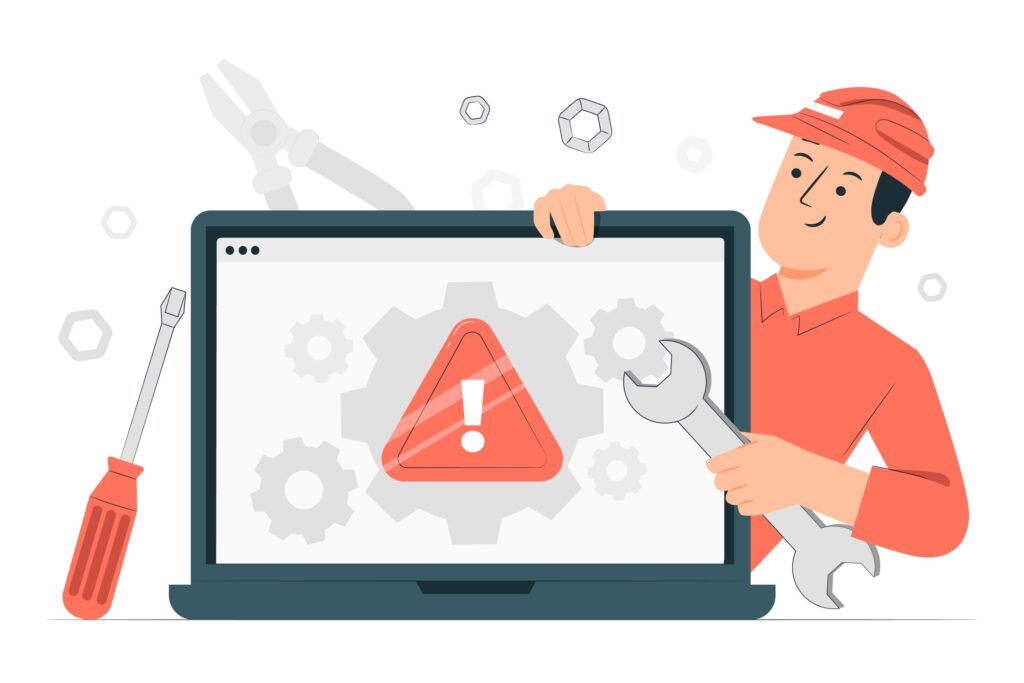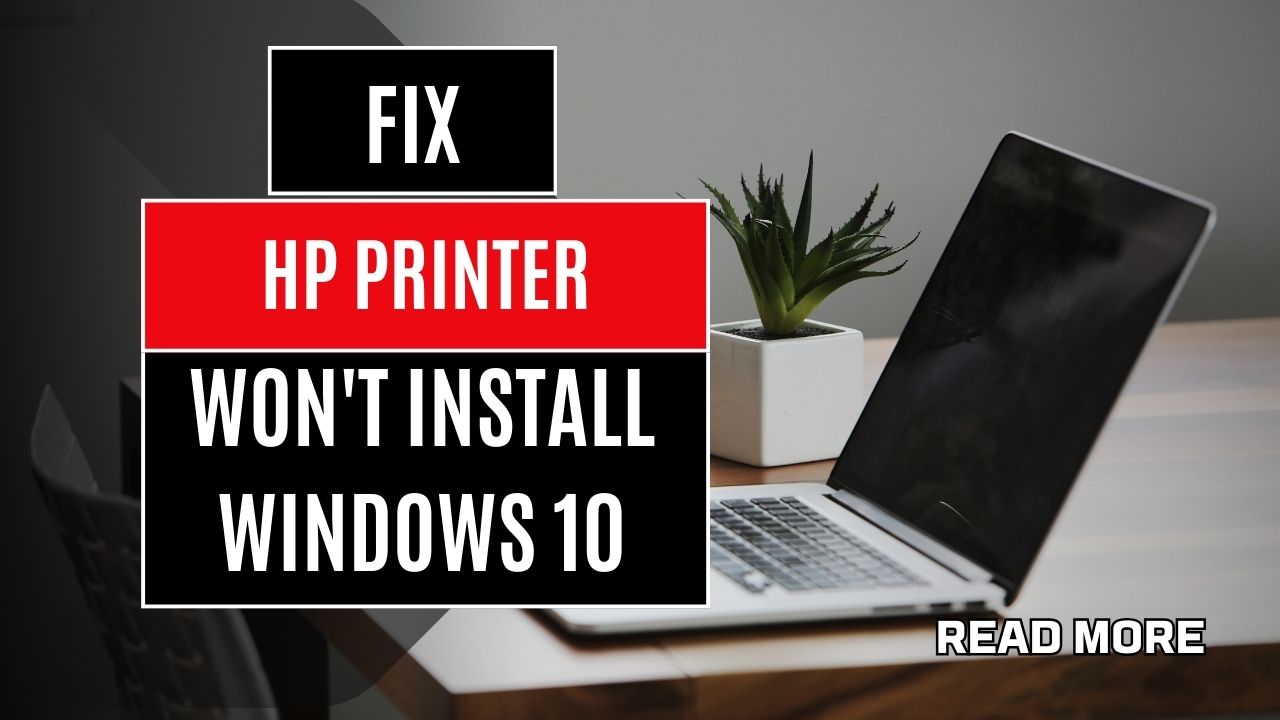Encountering the frustrating “HP printer won’t install Windows 10” error when trying to set up your new printer or after a system update? You’re facing one of the most common Windows 10 printing challenges that affects millions of users worldwide. This installation roadblock can turn a simple printer setup into hours of troubleshooting, leaving you unable to print important documents when you need them most.
The issue typically occurs due to compatibility conflicts between HP printer drivers and Windows 10’s built-in printer management system. Sometimes outdated drivers, corrupted installation files, or Windows security settings prevent proper printer installation. Other times, remnants from previous printer installations interfere with new setup attempts.
Don’t worry – most HP printer installation problems on Windows 10 have straightforward solutions that don’t require technical expertise or expensive software. Whether you’re dealing with driver conflicts, connection issues, or installation errors, this comprehensive guide provides nine proven methods to get your HP printer working seamlessly with Windows 10.
Why Are HP Printer Won’t Install Windows 10?
HP printer won’t install Windows 10 errors encompass various installation failures that prevent your printer from connecting properly to your Windows 10 computer. These errors typically appear as error codes, generic failure messages, or incomplete installation processes that leave your printer unrecognized by the system.
Common manifestations include the infamous “Driver is unavailable” message, “Windows cannot find a driver for your printer” notifications, or installations that appear to complete successfully but leave the printer non-functional. Some users experience installations that start but freeze mid-process, while others encounter immediate failures when attempting to add their printer.
The root causes vary significantly. Windows 10’s automatic driver updates sometimes install incompatible or generic drivers that don’t fully support HP printer features. Legacy HP software from previous Windows versions can conflict with new installations. Additionally, Windows security features may block legitimate HP drivers if they’re not digitally signed or come from untrusted sources.
Network-related installation failures often occur with wireless HP printers when Windows 10 can’t establish proper communication during setup. USB connection issues can also prevent successful installation, particularly with older HP printer models that require specific driver versions not included in Windows 10’s default driver database.
Understanding that these installation problems usually stem from software conflicts rather than hardware issues helps focus troubleshooting efforts on the most effective solutions.
9 Proven Ways to Fix HP Printer Won’t Install Windows 10

1. Use HP Smart App for Automatic Installation
The HP Smart app provides the most reliable method to resolve HP printer won’t install Windows 10 issues. This official HP application automatically downloads the correct drivers and handles complex installation procedures.
Download HP Smart from the Microsoft Store or HP’s official website. Launch the app and click “Add Printer” to begin the automatic detection process. The app will scan for nearby HP printers and guide you through the complete setup process, including driver installation and network configuration.
If your printer doesn’t appear automatically, select “My printer is a little older” and follow the manual setup prompts. The HP Smart app often succeeds where traditional installation methods fail because it bypasses Windows 10’s generic driver system.
2. Download Drivers Directly from HP Support
When automatic installation fails, manually downloading the correct drivers from HP’s support website often resolves installation problems. Navigate to HP’s official support page and search for your exact printer model number.
Download the full feature driver package rather than basic drivers, as these include all necessary software components for complete functionality. Save the driver file to your desktop for easy access during installation.
Right-click the downloaded file and select “Run as administrator” to ensure proper installation permissions. Follow the installation wizard prompts and restart your computer when prompted to complete the driver installation process.

3. Run Windows 10 Printer Troubleshooter
Windows 10 includes a built-in troubleshooter specifically designed to identify and fix printer installation problems. Access this tool through Settings > Update & Security > Troubleshoot > Additional troubleshooters > Printer.
The troubleshooter automatically scans for common installation issues, including corrupted drivers, service problems, and configuration errors. It can resolve many HP printer won’t install Windows 10 problems without manual intervention.
Allow the troubleshooter to complete its full scan and apply any recommended fixes. Restart your computer after the troubleshooter finishes and attempt printer installation again.
4. Clear Previous Printer Installation Remnants
Leftover files from previous printer installations frequently interfere with new HP printer setups. These remnants can cause conflicts that prevent successful installation even with correct drivers.
Open Device Manager by right-clicking the Start button and selecting it from the menu. Expand the “Printers” section and remove any listed HP printers, including those showing warning symbols. Also check “Unknown devices” for any unrecognized HP hardware.
Navigate to Settings > Devices > Printers & scanners and remove all HP printer entries. Additionally, clear the print spooler by opening Services, stopping the “Print Spooler” service, deleting files from C:\Windows\System32\spool\PRINTERS, and restarting the service.

5. Update Windows 10 and Install Missing Updates
Outdated Windows 10 versions sometimes lack the necessary components for modern HP printer installation. Ensure your system has the latest updates that might include improved printer support.
Access Windows Update through Settings > Update & Security > Windows Update. Click “Check for updates” and install any available updates, particularly those labeled as driver updates or optional updates that might include printer-related improvements.
Restart your computer after installing updates and attempt printer installation again. Sometimes the specific updates needed for HP printer compatibility aren’t included in automatic update cycles.
6. Disable Windows Security Temporarily
Windows Defender and other security software occasionally block legitimate HP printer drivers during installation, interpreting them as potential threats. Temporarily disabling these protections can allow successful installation.
Open Windows Security by searching for it in the Start menu. Navigate to Virus & threat protection and temporarily disable real-time protection. Also disable any third-party antivirus software during the installation process.
Attempt printer installation while security features are disabled, then immediately re-enable all protections after successful installation. This method resolves installation blocks caused by overly aggressive security settings.
7. Use Device Manager to Force Driver Installation
When standard installation methods fail, Device Manager provides direct access to driver installation that can bypass HP printer won’t install Windows 10 errors. Connect your printer via USB and open Device Manager.
Look for your HP printer under “Other devices” or “Printers” – it may appear with a yellow warning triangle. Right-click the device and select “Update driver,” then choose “Browse my computer for drivers.”
Navigate to the folder containing your downloaded HP drivers and allow Windows to install them manually. This method often works when automatic installation routines encounter errors.

8. Reset Print Spooler Service
The Print Spooler service manages all printing operations in Windows 10, and corruption in this service can prevent new printer installations from completing successfully.
Open Command Prompt as administrator and stop the print spooler with the command “net stop spooler.” Navigate to C:\Windows\System32\spool\PRINTERS and delete all files in this directory.
Restart the print spooler service with “net start spooler” and attempt printer installation again. This process clears any corrupted print jobs or configurations that might interfere with new installations.
9. Perform Clean Boot Installation
If other methods fail, performing a clean boot eliminates software conflicts that might prevent HP printer installation. This process starts Windows with minimal services and programs running.
Type “msconfig” in the Start menu search and open System Configuration. On the General tab, select “Selective startup” and uncheck “Load startup items.” On the Services tab, check “Hide all Microsoft services” and click “Disable all.”
Restart your computer and attempt printer installation in this clean environment. If installation succeeds, you can identify conflicting software by gradually re-enabling services and startup items.

Advanced Installation Tools and Resources
Professional IT administrators often use specialized tools to manage printer installations in enterprise environments. The HP Universal Print Driver provides broad compatibility across multiple HP printer models and can resolve installation issues when model-specific drivers fail.
Microsoft’s Print Management console, available in Windows 10 Pro and Enterprise editions, offers advanced printer installation and management capabilities. This tool can force driver installations and manage printer policies that might interfere with standard installation procedures.
Third-party driver management software can automatically identify and install the correct drivers for your HP printer model. These tools maintain extensive driver databases and can often locate drivers for older HP printers that aren’t readily available through standard channels.
For network-based installations, HP’s Web Jetadmin software provides comprehensive printer management capabilities including remote installation and configuration options that can bypass local installation problems.
Common Installation Mistakes and How to Avoid Them
Many users worsen their HP printer won’t install Windows 10 problems by rushing through installation steps or skipping important preparatory work. One critical mistake is attempting installation while other printers are connected or while previous printer software is still installed. These conflicts can cause installation failures even with correct drivers.
Using generic or Windows-provided drivers instead of HP’s official drivers often results in limited functionality or complete installation failure. While Windows 10 includes many printer drivers, HP printers typically require manufacturer-specific drivers for full feature support.
Another common error is installing printer software before connecting the printer or vice versa. HP’s installation procedures usually specify the exact sequence required for successful setup – deviating from these instructions often causes problems.
Ignoring error messages during installation leads many users to assume the process completed successfully when it actually failed. Always read installation messages carefully and address any warnings or errors before considering the installation complete.
Network security settings in corporate environments frequently block HP printer installations. Users often don’t realize their company’s IT policies prevent printer driver installations, leading to repeated failed attempts that could be resolved through proper IT support channels.
Finally, attempting installation on user accounts without administrative privileges commonly causes failures. HP printer installation typically requires administrator rights to install drivers and configure system settings properly.
Frequently Asked Questions
Q: Why does my HP printer install but not print on Windows 10? A: This usually indicates incomplete driver installation or incorrect default printer settings. Try reinstalling using HP Smart app and ensure your printer is set as the default device in Windows printer settings.
Q: Can I install an old HP printer on Windows 10? A: Most HP printers from 2010 onwards are compatible with Windows 10, though you may need to download legacy drivers from HP’s support website. Printers older than 2010 might require compatibility mode installation.
Q: What should I do if HP Smart app doesn’t detect my printer? A: Ensure your printer and computer are on the same Wi-Fi network, restart both devices, and temporarily disable firewall software. For USB connections, try different USB ports and cables.
Q: How do I fix “Driver is unavailable” errors with my HP printer? A: This error typically requires downloading and manually installing the latest drivers from HP’s website. Remove the existing printer from Windows settings before installing new drivers to prevent conflicts.
Conclusion
Successfully resolving HP printer won’t install Windows 10 issues requires patience and systematic troubleshooting, but the nine solutions outlined in this guide address virtually all common installation problems. From using HP’s Smart app for automatic setup to manually forcing driver installation through Device Manager, these methods provide multiple pathways to successful printer integration.
The key to successful HP printer installation on Windows 10 lies in understanding that modern printing systems involve complex interactions between hardware, drivers, and operating system components. When one element fails, the entire installation can be affected. By methodically working through cleaning previous installations, updating drivers, and addressing software conflicts, most users can achieve successful printer setup.
Remember that prevention is often easier than correction. Keeping Windows 10 updated, using official HP drivers, and following manufacturer installation procedures help avoid most installation problems before they occur. When issues do arise, starting with the simplest solutions and progressing to more advanced techniques typically resolves even stubborn installation failures, restoring your printing capabilities quickly and efficiently.
Canon MegaTank Laser Printer Grabbing Extra Sheets: 8 Expert Solutions That Work Read More.





Recent Comments